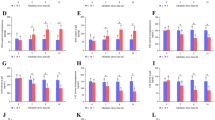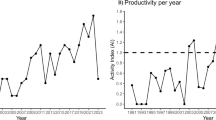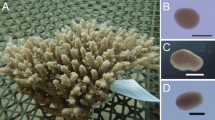Abstract
The regeneration of the intestine of sea cucumber (Apostichopus japonicus) was studied by describing historically the changes that occurred during intestine regeneration on the fifth day after chemically-induced evisceration. An expressed sequence tag (EST) analysis was undertaken to identify major genes, which might be involved in intestine regeneration of A. japonicus. Two cDNA libraries were constructed with directional cloning method, one for regenerating intestine collected on the third, fourth and fifth day after evisceration (post-evisceration, PE), and the other for the non-eviscerated (NE). A total of 730 ESTs were generated by sequencing cDNA clones from the two libraries (372 from PE and 358 from NE). The results showed that the number of genes that were involved in primary metabolism of PE library was less than that of NE library, while the number of genes involved in cell defense/immunity, cell division, cell signal transduction/communication of PE library was more than that of NE library. The results also revealed that the expression of the genes which might be involved in regeneration was enhanced to some extent after evisceration. Only about 11.54% of the sequenced clones were shared by two libraries, which provided some clues for the existence of differential gene expression between PE and NE intestines. A gene named epenAj was also characterized in this study.
Similar content being viewed by others
References
Adams D. S., Hasson B., Boyer-Boiteau A., El-Khishin A. and Shashoua V. E. (2003). A peptide fragment of ependymin neurotrophic factor uses protein kinase C and the mitogen-activated protein kinase pathway to activate c-Jun N-terminal kinase and a functional AP-1 containing c-Jun and c-fos proteins in mouse NB2a cells. Journal of Neuroscience Research 72(3): 405–416
Altschul S. F., Gish W., Miller W., Myers E. W. and Lipman E. W. (1990). Basic local alignment search tool. Journal of Molecular Biology 215: 403–410
Barrinaga M. (1994). Looking to development’s future. Science 266: 561–564
Beaudoing E., Freier S., Wyatt J. R. and Claverie J. M. (2000). Patterns of variant polyadenylation signal usage in human genes. Genome Research 10(7): 1001–1010
Chia F. and Xing J. (1996). Echinoderm Coelomocytes. Zoological Studies 35(4): 231–254
Chou H. H. and Holmes M. H. (2001). DNA sequence quality trimming and vector removal. Bioinformatics 17: 1093–1104
Dolmatov I. Y., Eliseikina M. G., Bulgakov A. A., Ginanova T. T., Lamash N. E. and Korchagin V. P. (1996). Muscle regeneration in the holothurian Stichopus japonicus. Roux’s Archives of Developmental Biology 205: 486–493
Eliseikina M. G. and Magarlamov T. Y. (2002). Coelomocyte morphology in the Holothurians Apostichopus japonicus (Aspidochirota: Stichopodidae) and Cucumaria japonica (Dendrochirota: Cucumariidae). Russian Journal of Marine Biology 28(3): 197–202
Ewing B. and Green P. (1998). Base-calling of automated sequencer traces using Phred. II. Error probabilities. Genome Research 8: 186–194
Ewing B., Hillier L., Wendl M. C. and Green P. (1998). Base-calling of automated sequencer traces using Phred: I. Accuracy assessment. Genome Research 8: 175–185
Ganss B. and Hoffmann W. (1993). Calcium binding to sialic acids and its effect on the conformation of ependymins. European Journal of Biochemistry 217: 275–280
García-Arrarás J. E., Díaz-Miranda L., Torres-Vázquez I., Torres I. I., Torres-Avilán I., File S., Jiménez L., Rivera-Bermudez K., Arroyo E. and Cruz W. (1999). Regeneration of the enteric nervous system in the sea cucumber Holothuria glaberrima. The Journal of Comparative Neurology 406: 461–475
García-Arrarás J. E., Estrada-Rodgers L., Santiago R., Torres I. I., Díaz-Miranda L. and Torres-Avilán I. (1998). Cellular mechanisms of intestine regeneration in the sea cucumber, Holothuria glaberrima Selenka (Holothuroidea:Echinodermata). Journal of Experimental Zoology 281: 288–304
García-Arrarás J. E., Rojas-Soto M., Jiménez L. B. and Diaz-Miranda L. (2001). The enteric nervous system of echinoderms: unexpected complexity revealed by neurochemical analysis. The Journal of Experimental Biology 204: 865–873
Gong Z., Yan T., Liao J., Lee S. E., He J. and Hew C. (1997). Rapid identification and isolation of zebrafish cDNA clones. Gene 201: 87–98
He C., Chen L., Simmons M., Li P., Kim S. and Liu Z. J. (2003). Putative SNP discovery in interspecific hybrids of catfish by comparative EST analysis. Journal of Animal Breeding and Genetics 34: 445–448
Hoffmann W. and Schwarz H. (1996). Ependymins: meningeal-derived extracellular matrix proteins at the blood–brain barrier. International Review of Cytology 165: 121–158
Huang X. and Madan A. (1999). CAP3: a DNA sequence assembly program. Genome Research 9: 868–877
Humason G. L. (1972). Animal Tissue Techniques. W. H. Freeman and Co, San Francisco
Liu Z. J., Karsi A. and Dunham R. A. (1999). Development of polymorphic EST markers suitable for genetic linkage mapping of catfish. Journal of Marine Biotechnology 1: 437–447
Liu Z. J., Li P., Kocabas A., Ju Z., Karsi A. and Cao D. (2001). Microsatellite-containing genes from the channel catfish brain: evidence of trinucleatide repeat expansion in the coding region of nucleotide excision repair gene RAD23B. Biochemical and Biophysical Research Communications 289: 317–324
Murakawa K., Matsubara K., Fukushima A. and Yoshii J. (1994). Chromosomal assignments of 3′-directed partial cDNA sequences representing novel genes expressed in granulocytoid cells. Genomics 23: 379–389
Nimmrich I., Erdmann S., Melchers U., Chtarbova S., Finke U., Hentsch S., Hoffmann I., Oertel M., Hoffmann W. and Muller O. (2001). The novel ependymin related gene UCC1 is highly expressed in colorectal tumor cells. Cancer Letter 165(1): 71–79
Okubo K. and Matsubara K. (1997). Complementary DNA sequence (EST) collections and the expression information of the human genome. Federation of European Biochemical Societies Letter 403: 225–229
Pradel G., Schachner M. and Schmidt R. (1999). Inhibition of memory consolidation by antibodies against cell adhesion molecules after active avoidance conditioning in zebrafish. Journal of Neurobiology 39(2): 197–206
Rother S., Schmidt R., Brysch W. and Schlingensiepen K. H. (1995). Learning-induced expression of meningeal ependymin mRNA and demonstration of ependymin in neurons and glial cells. Journal of Neurochemistry 65(4): 1456–1464
Sambrook, J., E. F. Fritsch & T. Maniatis, 1989. Molecular Cloning: A Laboratory Manual, (2nd edn.), pp. 359–361
Schmidt J. T. and Shashoua V. E. (1988). Antibodies to ependymin block the sharpening of the regenerating retinotectal projection in goldfish. Brain Research 446(2): 269–284
Shashoua V. E. (1977). Brain protein metabolism and the acquisition of new patterns of behavior. The Proceedings of the National Academy of Sciences (USA) 74(4): 1743–1747
Shashoua V. E. (1991). Ependymin, a brain extracellular glycoprotein and CNS plasticity. Annals of the New York Academy of Sciences 627: 94–114
Shashoua V. E., Adams D. and Boyer-Boiteau A. (2001). CMX-8933, a peptide fragment of the glycoprotein ependymin, promotes activation of AP-1 transcription factor in mouse neuroblastoma and rat cortical cell cultures. Neuroscience Letter 312(2): 103–107
Suárez-Castillo, E. C., W. E. Medina-Ortíz1, J. L. Roig-López2 & J. E. García-Arrarás, 2004. Ependymin, a gene involved in regeneration and neuroplasticity in vertebrates, is overexpressed during regeneration in the echinoderm Holothuria glaberrima. Gene 334: 133–143
Tang S. J., Sun K. H., Sun G. H., Lin G., Lin W. W. and Chuang M. J. (1999). Cold-induced ependymin expression in zebrafish and carp brain: implications for cold acclimation. Federation of European Biochemical Societies Letter 459(1): 95–99
Tomoya K. and Masahiro S. (2001). The analysis of expressed genes in the kidney of Japanese flounder, Paralichthys olivaceus, injected with the immunostimulant peptidoglycan. Fish Shellfish. The Journal of Immunology 11: 357–366
Wu C., Huang H., Arminski L., Castro-Alvear J., Chen Y., Hu Z., Ledley R. S., Lewis K. C., Mewes H.-W., Orcutt B. C., Suzek B. E., Tsugita A., Vinayaka C. R., Yeh L.-s., Zhang J. and Barker W. C. (2002). The protein information resource: an integrated public resource of functional annotation of poteins. Nucleic Acids Research 30: 35–37
Author information
Authors and Affiliations
Corresponding author
Rights and permissions
About this article
Cite this article
Zheng, FX., Sun, XQ., Fang, BH. et al. Comparative analysis of genes expressed in regenerating intestine and non-eviscerated intestine of Apostichopus japonicus Selenka (Aspidochirotida: Stichopodidae) and cloning of ependymin gene. Hydrobiologia 571, 109–122 (2006). https://doi.org/10.1007/s10750-006-0231-z
Received:
Revised:
Accepted:
Published:
Issue Date:
DOI: https://doi.org/10.1007/s10750-006-0231-z




